With the hopefulness and optimism of pre-pandemic summers, I composed a summer reading booklist. Historical fiction mixed with some pastoral magic realism would be a great reading experience designed for learning American history and reawakening a love of language and imagination with magic realism. As for my reading choice of memoir: it is always a delight to read Maxine Hong Kingston.
We read history to comprehend how the present moment has been determined by our collective pasts. Chickasaw poet and novelist Linda Hogan portrays the white man’s insatiable greed against the 1920s Oklahoma oil boom in Mean Spirit. James McBride introduces the reader to the greatest American hero of all, John Brown, in his novel The Good Lord Bird. A policeman becomes paralyzed incident in a 1968 Detroit anti–Vietnam War march changes the lives of two sisters, as well as their families and friends, in Her Sister’s Tattoo.
Magical realism fits into this pandemic summer. With just a few lyrical phrases, something like the brush strokes of a pastoral watercolor carefully applied, these novels by Ana Castillo, Alice Hoffman, and Chitra Divakaruni has the reader believing that all of the incidents and characters presented are completely reality based.
The Good Lord Bird by James McBride
James McBride’s inimitable 2013 historical novel The Good Lord Bird introduces the greatest American hero of all, the abolitionist John Brown. The tales of the last months of John Brown’s life is told through the eyes of Henry/Henrietta—a slave freed by John Brown during a minor Missouri raid, who was thought to be a teenage girl and became a favored member in John Brown’s family. The reader is appreciative of the enormous amounts of research and detail undertaken to portray John Brown with all of his outstanding characteristics as well as his foibles. Brown is seen as the American hero that he truly is. Brown’s failed raid on Harper’s Ferry, in 1859 Virginia, and his subsequent execution, was one of the catalysts responsible for the Civil War. The reader meets John Brown as he awaits execution and experiences the enormous vision and humanity of John Brown. There is abundant humor in this novel as the reader rides along with John Brown and his crew—but also enormous heartbreak.
Please read The Good Lord Bird before it is released as a cable movie; McBride’s words need to stick in the reader’s head.
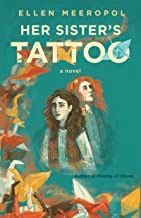 Her Sister’s Tattoo by Ellen Meeropol
Her Sister’s Tattoo by Ellen Meeropol
This remarkable novel, just published in April 2020, opens with a 1968 Detroit anti–Vietnam War peace march when “guerrilla theater tactics” that results in an injured policeman, and the two sisters, Rosa and Esther, who are arrested for the crime. Esther is a mother of a five-month old infant, and makes decisions that rip apart the bond with her sister Rosa as well as their extended family and friends.
Meeropol takes the reader through decades of the sisters’ lives and the unexpected consequences that have all stemmed from that day in Detroit, 1968. What could they have done differently? Should they have done anything differently?
What is fascinating about Her Sister’s Tattoo is the debate on the “truth,” and the varying responses given to a single question. There are no single truths, there are the “truths” in people’s motivations that are negated by another’s reality. The novel’s great strength is the psychological dynamics between the two sisters: patterns of behavior, began at toddlerhood and devoid of any progressive politics, that determine the “truths” arrived at when Rosa and Esther enter adulthood. Highly recommended for finding one’s own motivating “truths.”
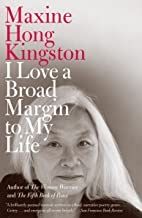 I Love a Broad Margin to My Life by Maxine Hong Kingston
I Love a Broad Margin to My Life by Maxine Hong Kingston
Maxine Hong Kingston began her lyrical memoir on aging, written in an exquisite form of prose and poetry, when she was about to turn 65 years old. As Kingston circles back and forth between the past and the present, she takes the reader from her arrest as a peaceful protester in Washington, D.C., against the Iraq War to a trip to China where she introduces the Tripmaster Monkey (one of Kingston’s inimitable fictional characters from her novel, The Tripmaster Monkey.
The phrase “I love a broad margin to my life” was penned by Henry David Thoreau, and the quote hung near one of Kingston’s desks. Kingston strives—and urges the reader to strive—to expand one’s vision and attempt to live all of one’s possibilities. Kingston gives the reader subtle and profound wisdom and grace wrapped in exquisite poetry.
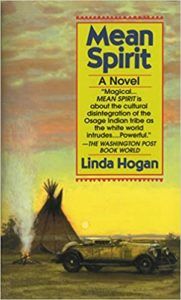 Mean Spirit by Linda Hogan
Mean Spirit by Linda Hogan
Chickasaw poet and novelist Linda Hogan’s debut novel was nominated for a Pulitzer Prize in 1991. The novel depicts the white man’s insatiable greed for the oil rich Oklahoma land of the Osage tribe in the 1920s. When a pattern of “suspicious deaths” begins with Grace Blanket, the richest Osage in the territory, and then with the Graycloud family who sheltered Grace Blanket’s daughter Nola after her mother’s death, a Native American government official from Washington D.C., Stace Red Hawk, goes west to investigate. Along the way to solving the assault against the Osage, Stace Red Hawk begins a spiritual journey back to the Native American people that he had left behind.
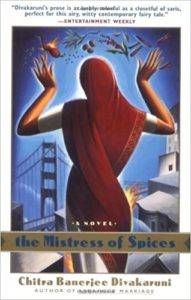 The Mistress of Spices by Chitra Divakaruni
The Mistress of Spices by Chitra Divakaruni
This seductive magic realism novel is set in the gritty streets of Oakland, California where an elderly, slightly crippled elder Indian woman dispenses wisdom and curative spices to her neighbors. However, Tilo, the spice mistress, was not born in any hospital, but rather emerged from fire in a land and time far away. Everything is going well at the Oakland spice shop and Tilo has become successful at healing her Oakland neighbors. Until, one day, the proverbial stranger enters Tilo’s spice shop and everything in Tilo’s life is challenged.
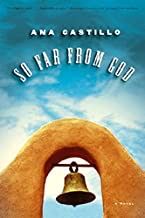 So Far From God by Ana Castillo
So Far From God by Ana Castillo
Barbara Kingsolver described So Far From God as “the offspring of One Hundred Years of Solitude and General Hospital: a sassy, magical, melodramatic love child who won’t sit down.” Ana Castillo’s 1992 novel takes the reader to the tiny hamlet town of Tome, New Mexico, where the marvelous and the magical is the norm. Tome’s supernatural powers shelters Sofia as she raises her four daughters, Fe, Esperanza, Caridad, and LaLoca whenever hardship arises.
 Turtle Moon by Alice Hoffman
Turtle Moon by Alice Hoffman
Alice Hoffman’s wonderful magic realism mystery novel won the Dashiell Hammett Mystery Prize in 1992. Turtle Moon takes place in Verity, Florida, the most humid place in eastern Florida where “…the air all around the town limits is so thick that sometimes a soul cannot rise and instead attaches itself to a stranger, landing right between the shoulder blades with a thud that carries no more weight than a hummingbird.”
Verity is also a town mostly inhabited by divorced women and their children who have left the New York and New Jersey suburbs for a new beginning and cheaper rents. As the chlorine in the swimming pools turns everyone’s hair green and the month of May makes it too humid to breathe, Keith, the meanest 12-year-old boy in Verity, discovers a murdered woman who had been doing her laundry at midnight. Keith takes off with the woman’s toddler and the mystery begins amid the heat and the inherent wisdom of dogs.









